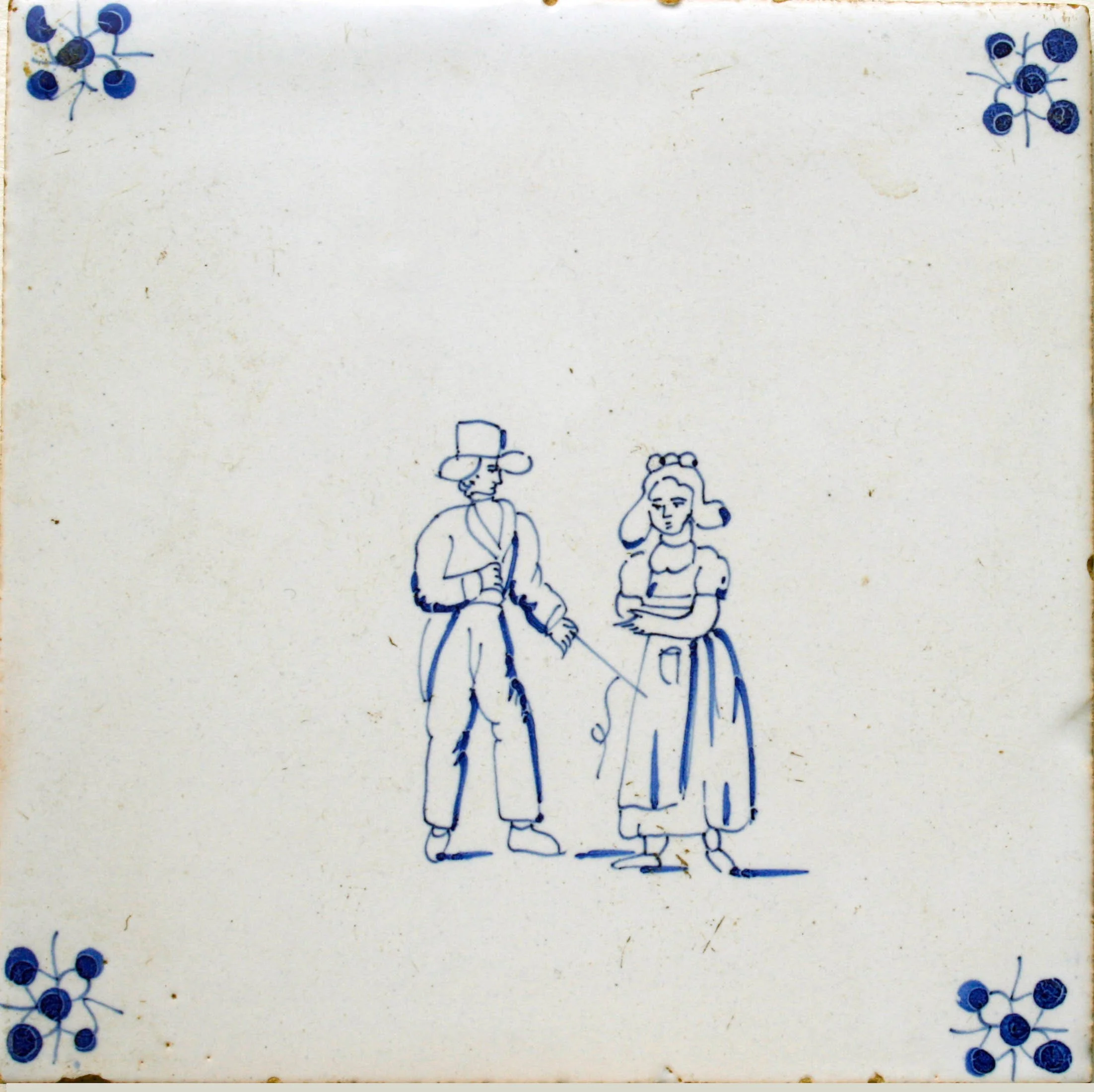DESIGNING WITH DELFT: CELEBRATING THE BEAUTY OF VINTAGE PIECES
Imagine stepping into a new client project to find an entire room full of stunning, hand painted vintage tiles. Our client’s brief, when turning this former dairy into a kitchen, was ‘do not touch the tiles’! We focussed on designing a kitchen to enhance these Delft beauties, hitting some modern and practical needs whilst keeping the tiles as stars of the show.
A LITTLE ABOUT DELFT
Named after the Dutch city where they originated, Delft tiles date back to the 16th century. Inspired by Chinese porcelain, early Dutch artisans began producing these iconic blue-and-white ceramic tiles as both a practical and decorative element. By the 17th century — the Dutch Golden Age — Delftware had become a major industry, adorning homes across Europe.
Most commonly depicting pastoral scenes, ships, windmills, floral motifs, and biblical tales, the original tiles were individually hand-painted, giving each one a unique charm. Today, traditional Delft tiles are still made in the Netherlands by a handful of specialist studios, continuing the centuries-old techniques that make them so special.
DESIGNING AROUND HISTORY
Working within a historic property means striking a careful balance between old and new. Modernising a kitchen is often necessary for functionality, but it should never come at the expense of irreplaceable period features. Elements like these tiles, original cabinetry, old stone sinks, or rustic beams can benefit from thoughtful restoration and will add enormous character to the space you are designing.
THE ART OF SENSITIVE RESTORATION
True restoration respects the past without faking it. This means cleaning without over-polishing, repairing without disguising patina, and never replacing something that can be salvaged.
The tiles in this kitchen were in remarkable condition. A few had cracks or chips, and where patches had been re-grouted over the years the grout lines were very different in colour. We decided on gentle restoration approach. The tiles were carefully cleaned and that enabled us to check they were securely attached to the wall as well. We used an extremely talented restorer to repair the worst of the chips, cracks and holes but left the more minor damage to tell it’s own story. Our restorer then worked with his palette of pigment to homogenise the grout colour – to an extent – so that nothing seemed out of place, but nothing looked new. The tiles were part of the fabric of the building and needed to tell its story.
A ROOM WITH A SOUL
In this kitchen the tiles are more than a design feature—they are a conversation piece, a slice of European history, and a work of art. Making them the heart of the kitchen not only honoured their past but elevates the present, creating a space that is both beautiful and meaningful. So many people have commented on their use in this space, and how clever it was to use them as a design feature. I can’t take any credit for them. They are beautiful. They were already there. All we did was show them a little love and create a room to show them to their best advantage!
SUPPLIERS OF DELFT TILES: ROYAL DELFT | DELFT TILES






